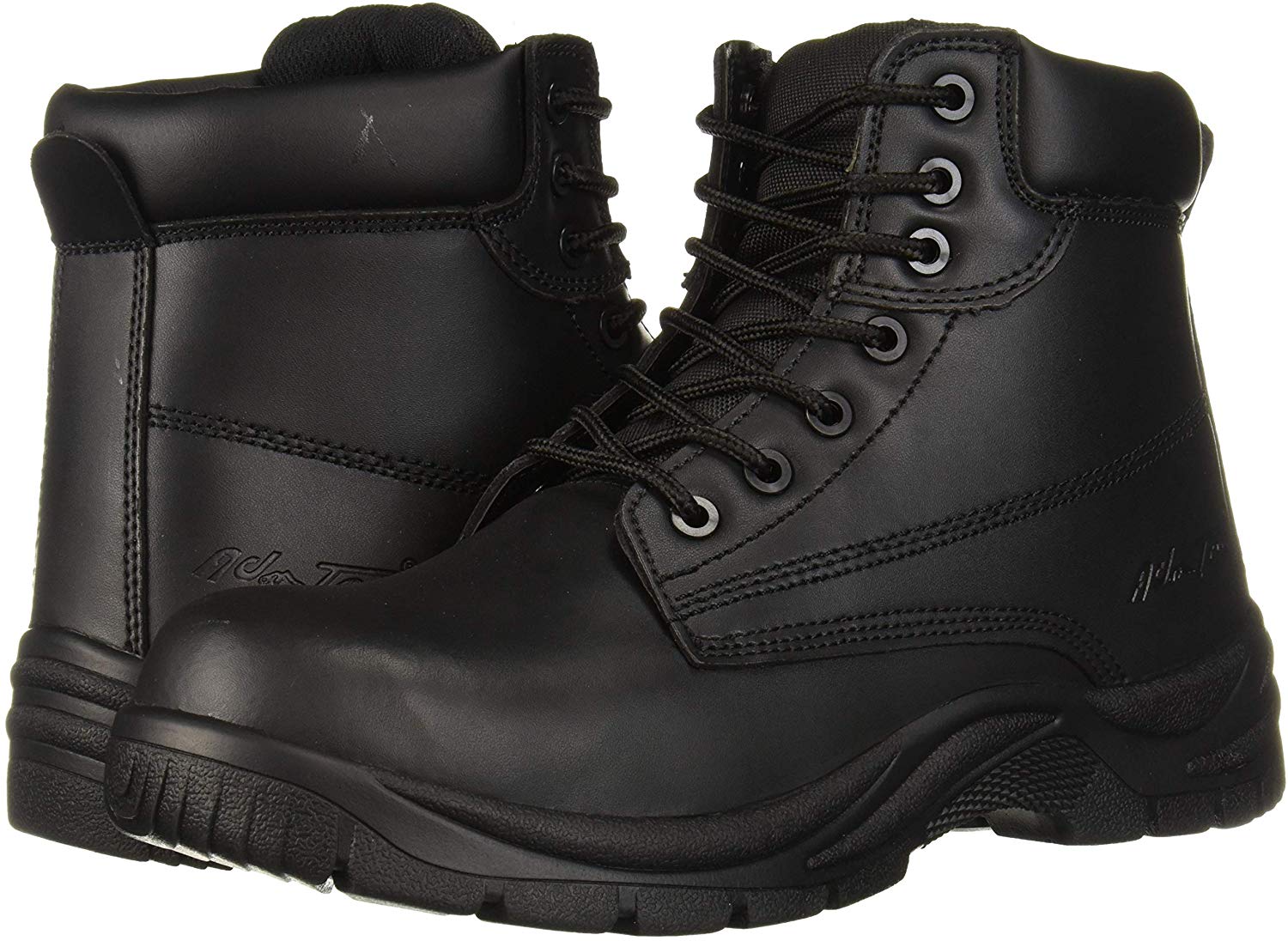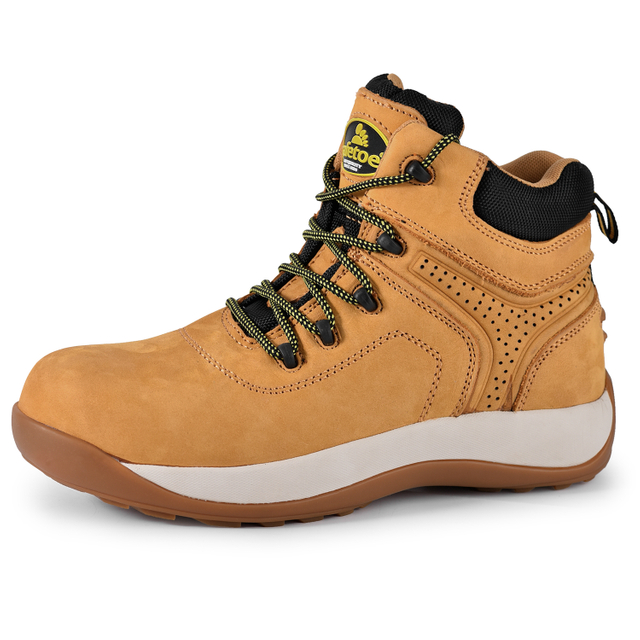Why Oil Resistant Work Shoes Are a Must-Have
In hazardous work environments, the right footwear can be the difference between safety and disaster. Oil resistant work shoes are a crucial component of personal protective equipment (PPE) for workers in industries where oil and chemicals are present. The risks of slips, falls, and foot injuries are ever-present, and the consequences can be devastating. In fact, the Bureau of Labor Statistics reports that slips, trips, and falls are the leading cause of workplace injuries, resulting in thousands of workers’ compensation claims each year. By wearing the best oil resistant work shoes, workers can significantly reduce the risk of accidents and ensure a safer, more productive work environment. Employers also benefit from reduced workers’ compensation claims, decreased downtime, and improved overall workplace safety.
How to Choose the Best Oil Resistant Work Shoes for Your Job
Selecting the right oil resistant work shoes for your job can be a daunting task, especially with the numerous options available in the market. However, by considering a few key factors, you can make an informed decision and ensure that your feet are protected from hazardous substances. First, it’s essential to identify the type of oil or chemical exposure you’ll be facing on the job. Different oils and chemicals require specific types of protection, so it’s crucial to choose a shoe that’s designed to resist the substances you’ll be working with. Next, consider the job requirements, including the terrain, temperature, and physical demands of the task. For example, if you’ll be working in a wet or slippery environment, you’ll need shoes with excellent slip resistance. Additionally, think about your personal comfort preferences, such as the level of cushioning, breathability, and flexibility you need. By taking these factors into account, you can find the best oil resistant work shoes for your job and ensure a safe and comfortable working experience.
Top Picks: Dr. Martens Ironbridge and Thorogood American Made Work Boots
When it comes to finding the best oil resistant work shoes, there are many options to choose from. Two popular choices that stand out from the rest are the Dr. Martens Ironbridge and the Thorogood American Made Work Boots. The Dr. Martens Ironbridge is a top pick among workers in the oil and gas industry, thanks to its rugged outsole and slip-resistant technology. With a comfortable, breathable design and a durable construction, these shoes are perfect for workers who need a reliable pair of boots that can keep up with the demands of their job. The Thorogood American Made Work Boots, on the other hand, offer a more traditional work boot design with a focus on comfort and support. With a soft, cushioned insole and a rugged outsole, these boots are ideal for workers who need a pair of shoes that can provide all-day comfort and protection. Both of these options have received rave reviews from customers, who praise their durability, comfort, and effectiveness in protecting against oil and chemical spills.
The Science Behind Oil Resistant Materials
When it comes to creating the best oil resistant work shoes, manufacturers rely on advanced technology and materials to provide superior protection and slip resistance. One of the key components of oil resistant work shoes is the rubber compound used in the outsole. This specialized rubber is designed to resist the penetration of oils and chemicals, providing a barrier between the wearer’s feet and the hazardous substances. In addition to rubber compounds, synthetic materials such as polyurethane and polyvinyl chloride (PVC) are also used in oil resistant work shoes. These materials are often treated with specialized coatings or additives to enhance their slip resistance and protection. For example, some oil resistant work shoes feature a silicone-based coating that provides additional grip on slippery surfaces. By understanding the science behind oil resistant materials, workers can make informed decisions when selecting the best oil resistant work shoes for their job, and manufacturers can continue to innovate and improve their products.
Slip Resistance vs. Oil Resistance: What’s the Difference?
When it comes to selecting the best oil resistant work shoes, it’s essential to understand the distinction between slip resistance and oil resistance. While these two terms are often used interchangeably, they refer to different aspects of protection in work shoes. Slip resistance refers to a shoe’s ability to provide traction on slippery surfaces, reducing the risk of slips and falls. Oil resistance, on the other hand, refers to a shoe’s ability to resist the penetration of oils and chemicals, protecting the wearer’s feet from hazardous substances. In the best oil resistant work shoes, these two features work together to provide comprehensive protection. For example, a shoe with a slip-resistant outsole can help prevent slips and falls, while an oil-resistant upper can protect the wearer’s feet from chemical splashes. By understanding the difference between slip resistance and oil resistance, workers can make informed decisions when selecting the best oil resistant work shoes for their job, and manufacturers can design shoes that provide optimal protection and performance.
Comfort and Durability: Key Features to Look For
When selecting the best oil resistant work shoes, comfort and durability are essential considerations. A comfortable pair of shoes can make a significant difference in a worker’s productivity and overall job satisfaction. Look for shoes with cushioning and breathable materials that will keep feet cool and dry throughout the workday. Additionally, a rugged outsole is crucial for withstanding the demands of a hazardous work environment. The best oil resistant work shoes will strike a balance between comfort and durability, providing workers with the protection they need without sacrificing comfort. Furthermore, durable shoes can help reduce the frequency of replacements, saving workers and employers time and money in the long run. By prioritizing comfort and durability, workers can find the best oil resistant work shoes that meet their unique needs and preferences, ensuring a safe and comfortable work experience.
Industry-Specific Requirements: Meeting Regulations and Standards
In various industries, such as manufacturing, construction, and oil refining, workers are exposed to hazardous substances and slippery surfaces. To ensure a safe working environment, industry-specific regulations and standards have been established for oil resistant work shoes. The Occupational Safety and Health Administration (OSHA) requires employers to provide personal protective equipment (PPE), including footwear, to protect workers from hazardous chemicals and substances. The American Society for Testing and Materials (ASTM) and the Canadian Standards Association (CSA) have also developed standards for oil resistant work shoes, including requirements for slip resistance, abrasion resistance, and chemical resistance. When selecting the best oil resistant work shoes, it’s essential to consider the specific regulations and standards of your industry, ensuring that your footwear meets the necessary requirements for protection and safety. By meeting these standards, workers can have confidence in their footwear, knowing that they are protected from the hazards of their job.
Conclusion: Stay Safe and Protected on the Job
In conclusion, wearing the best oil resistant work shoes is crucial for workers in industries where oil and chemicals are present. By understanding the importance of oil resistant work shoes, knowing how to choose the right pair, and meeting industry-specific regulations and standards, workers can significantly reduce the risk of slips, falls, and foot injuries. Investing in high-quality, protective footwear is a worthwhile investment for both workers and employers, as it can lead to increased productivity, reduced downtime, and a safer working environment. Remember, the right pair of oil resistant work shoes can make all the difference in protecting your feet and ensuring a safe and successful workday. By prioritizing safety and protection, workers can focus on getting the job done with confidence and peace of mind.





